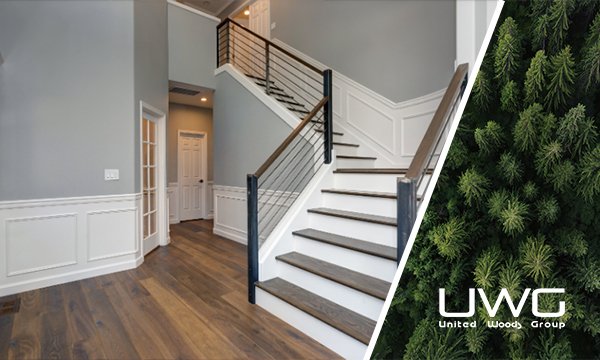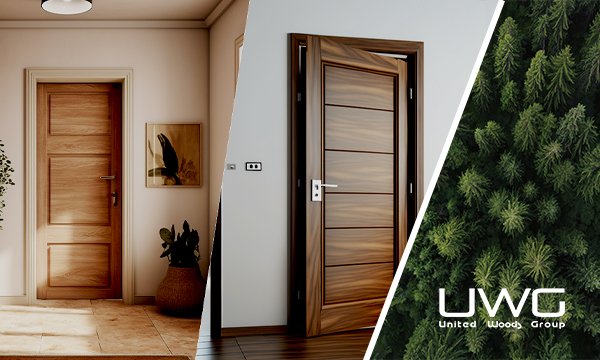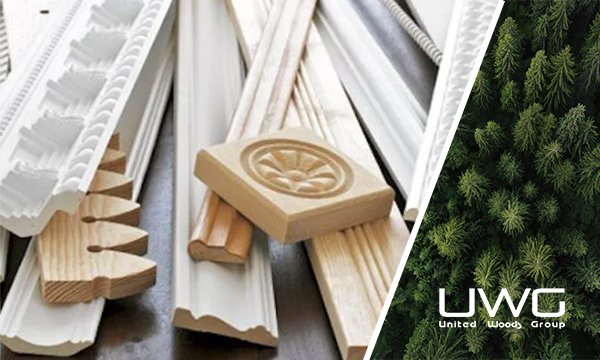Crown wood moulding is a classic architectural detail that has graced the interiors of homes for centuries. It serves both a functional and aesthetic purpose, bridging the gap between walls and ceilings while adding a touch of elegance to any room. However, many homeowners and builders often ponder whether crown moulding can genuinely create the illusion of higher ceilings. Given the variety of styles, sizes, and colors available, it’s essential to understand how crown moulding interacts with the overall design of a room and whether it can effectively enhance the perception of height in spaces with lower ceilings.
The answer is a resounding yes—crown moulding can indeed make a ceiling appear higher, but achieving this effect depends on several factors. The key lies in the choice of moulding style, size, and installation technique. For instance, opting for a narrower and simpler crown moulding in rooms with low ceilings can help maintain proportions and avoid overwhelming the space. Additionally, positioning the moulding closer to the ceiling creates a continuous visual line that draws the eye upward, enhancing the sense of height. When combined with complementary design elements such as vertical stripes or tall furniture, crown moulding can significantly contribute to an overall feeling of spaciousness, transforming a room into a more inviting and open environment.
- What Is Crown Wood Moulding and How Does It Enhance a Room’s Aesthetic?
- Can Crown Moulding Actually Make a Ceiling Appear Higher?
- How Does the Size and Style of Crown Moulding Affect Perceived Ceiling Height?
- What Colors and Finishes Work Best to Create the Illusion of Height?
- Are There Specific Installation Techniques to Maximize the Ceiling’s Appearance?
- How Can Crown Moulding Be Combined with Other Design Elements for a Taller Room Look?
- Conclusion
What Is Crown Wood Moulding and How Does It Enhance a Room’s Aesthetic?
Crown moulding is a type of trim that is installed at the junction where walls meet the ceiling. Traditionally made of wood, it can also be crafted from materials like plaster, MDF, or polyurethane. The primary function of crown moulding is to add a decorative touch, softening the transition between the wall and ceiling and giving a room a more finished appearance.
But crown moulding does more than just fill a gap. It has the power to transform the look and feel of a room, adding an element of grandeur and sophistication. By drawing the eye upwards, crown moulding can create a sense of height and openness in a space, making it an excellent design choice for rooms with low ceilings.

Can Crown Moulding Actually Make a Ceiling Appear Higher?
The short answer is yes, crown moulding can make a ceiling appear higher, but the effect depends on several factors. The psychological principle at play is known as “vertical elongation,” where the eye is drawn upward by design elements that emphasize vertical lines.
When properly selected and installed, crown moulding can create the illusion of a taller ceiling. The key lies in choosing the right size, style, and placement of the moulding. For example, a narrow, simple moulding placed closer to the ceiling can trick the eye into perceiving more height. Conversely, overly ornate or wide moulding may have the opposite effect, making the ceiling feel lower.

How Does the Size and Style of Crown Moulding Affect Perceived Ceiling Height?
Size and style play crucial roles in how crown moulding impacts the perception of ceiling height. For rooms with low ceilings, it’s best to opt for a narrower and less ornate moulding. A simple profile with clean lines helps maintain the room’s proportions without overwhelming the space.
On the other hand, in rooms with higher ceilings, you can afford to go bolder with wider and more elaborate moulding. Intricate designs and deeper profiles can add to the room’s grandeur without sacrificing the perception of height. The key is balance—too much detail in a small space can make it feel cramped, while too little in a large space can seem underwhelming.

What Colors and Finishes Work Best to Create the Illusion of Height?
Color and finish are powerful tools in altering the perception of space. When it comes to crown moulding, the color you choose can significantly influence how tall a ceiling appears. For instance, painting the moulding the same color as the ceiling can create a seamless transition that makes the ceiling feel taller. This technique works particularly well in rooms with low ceilings, as it avoids creating a visual break between the wall and ceiling.
In contrast, using a lighter or contrasting color for the crown moulding can add definition and draw attention to the ceiling’s perimeter, enhancing the room’s architectural features. High-gloss finishes reflect more light, which can also contribute to the perception of height by brightening the space.

Are There Specific Installation Techniques to Maximize the Ceiling’s Appearance?
Installation technique is another critical factor in achieving the desired effect. To make a ceiling appear higher, crown moulding should be installed closer to the ceiling, leaving minimal space between the top of the moulding and the ceiling itself. This creates a continuous line that leads the eye upward, elongating the room’s vertical dimension.
In some cases, builders may opt for a “stacked” crown moulding, where two or more pieces of moulding are layered to create a more substantial profile. When done correctly, this technique can add both height and depth to a room. However, it’s essential to keep the proportions in check—stacked moulding is better suited for rooms with higher ceilings.
Another trick is to extend the moulding down the wall slightly, blurring the line between wall and ceiling. This approach can create an illusion of a taller wall, thus making the ceiling appear higher.

How Can Crown Moulding Be Combined with Other Design Elements for a Taller Room Look?
Crown moulding is just one piece of the puzzle when it comes to creating the illusion of height in a room. To maximize the effect, consider combining it with other design elements that draw the eye upward.
One effective strategy is to use vertical stripes or patterns on the walls, which naturally lead the eye from the floor to the ceiling. Similarly, tall furniture, such as bookcases or floor-to-ceiling drapes, can emphasize the room’s vertical lines and contribute to the sense of height.
Another option is to use wainscoting or chair rails, which can visually lower the height of the walls, making the ceiling appear higher by comparison. When paired with crown moulding, these elements work together to create a balanced and harmonious design that enhances the overall perception of space.

Conclusion
In conclusion, crown wood moulding is more than just a decorative feature; it is a strategic design element that can dramatically enhance the perception of space within a room. By carefully selecting the right size, style, and installation technique, homeowners and builders can utilize crown moulding to create the illusion of higher ceilings, making rooms feel more open and airy. When combined with other design elements, such as vertical lines and tall furnishings, crown moulding can transform an ordinary space into a visually stunning environment. Whether you’re renovating an existing home or designing a new one, consider the impact of crown moulding as a way to elevate your interiors and enhance their overall aesthetic appeal.








